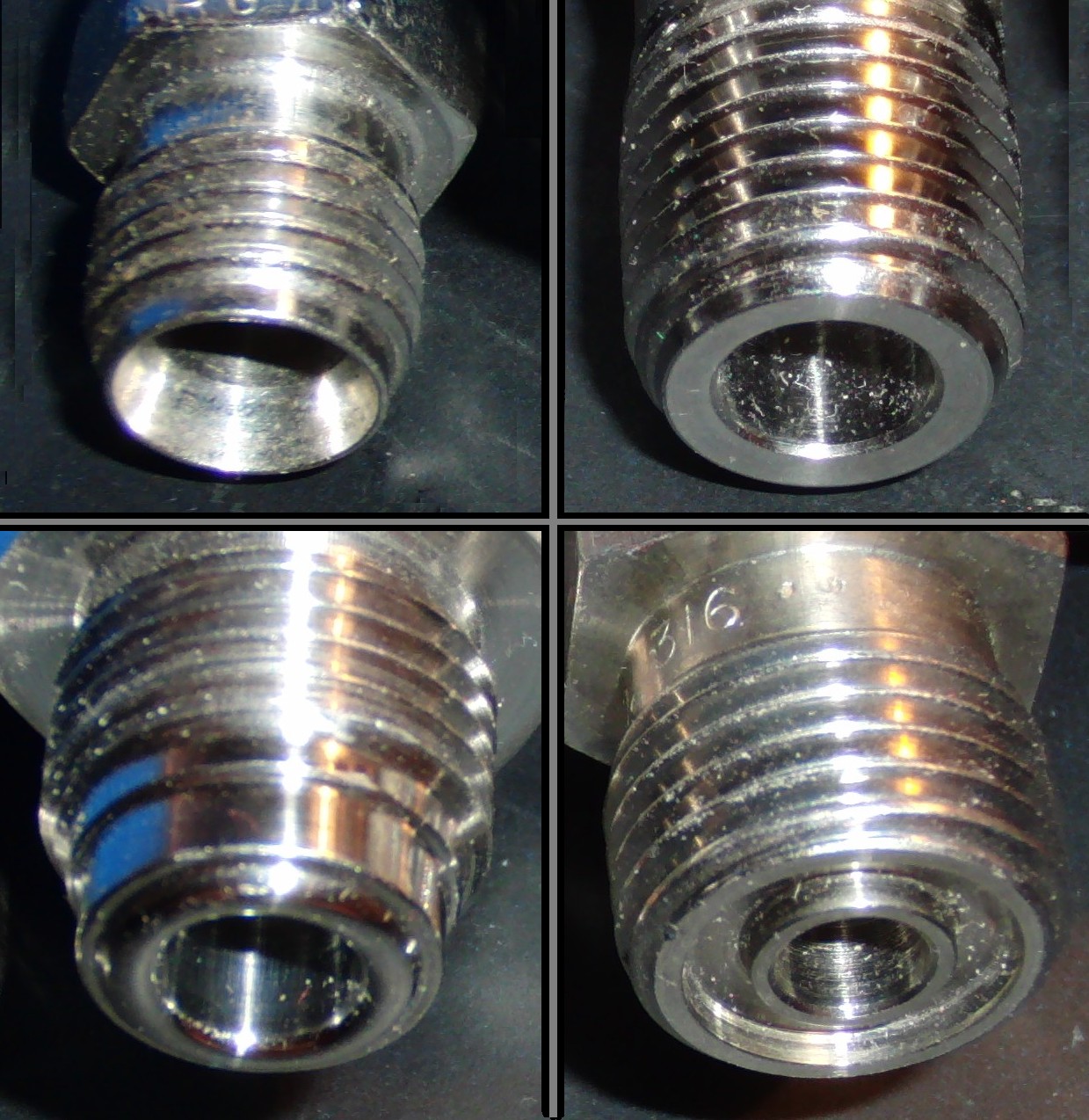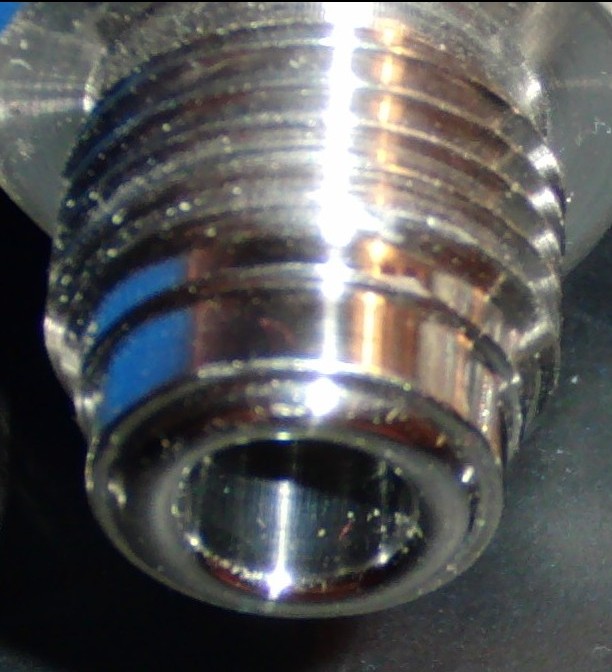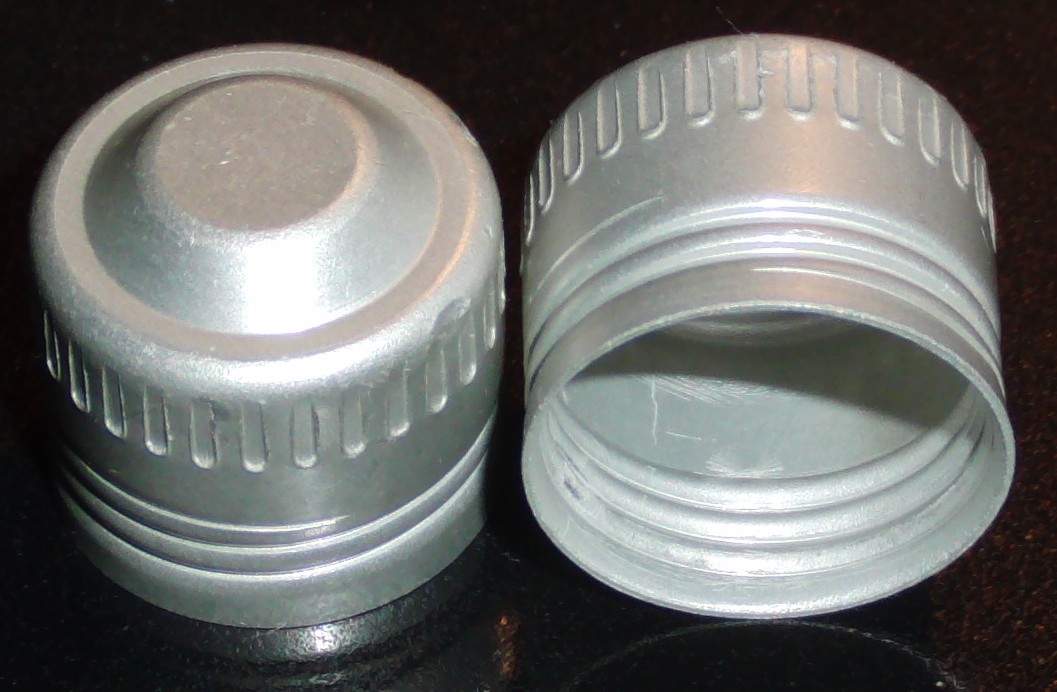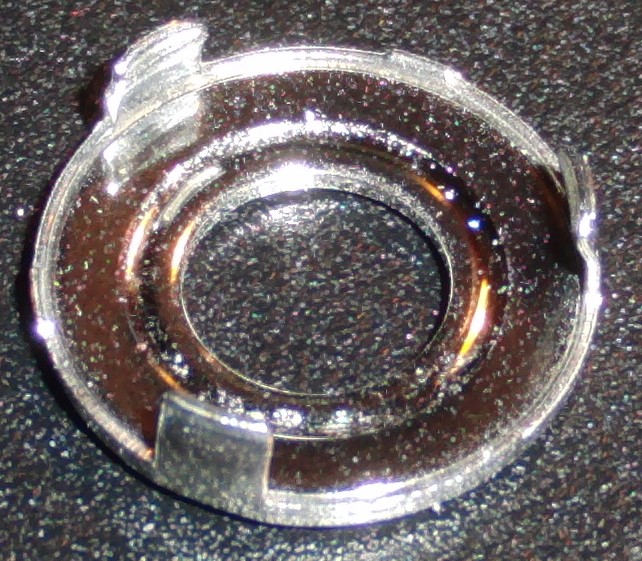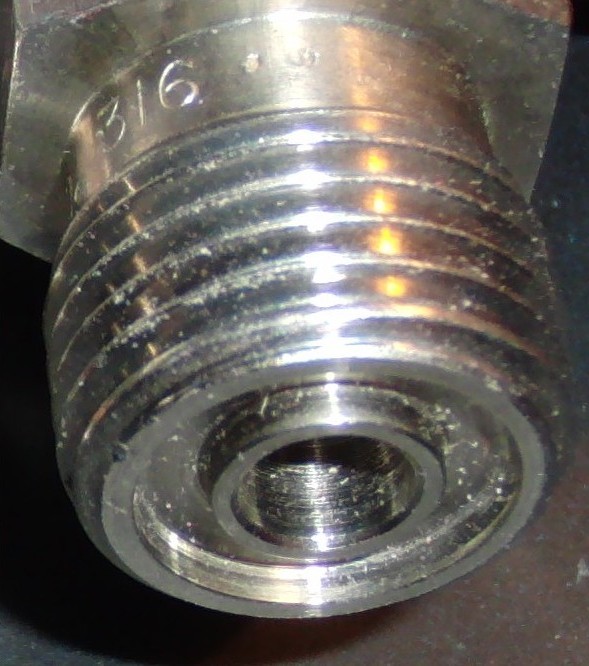Table of Contents
Various male fittings used in vacuum applications. Upper left: Swagelok tube fitting, upper right: NPT, lower left: VCR, lower right, VCO
Connector comparison
Swagelok tubing postfix codes [Vacuum Tubing Products]
| End Connection(s) | Designator |
|---|---|
| VCR female one end only | FR |
| VCR female both ends | DFR |
| VCR female one end, VCR male other end | FMR |
| VCR female one end, XBA adapter other end | FRB |
| VCR male one end only | MR |
| VCR male both ends | DMR |
| VCR male one end, XBA adapter other end | MRB |
| VCO female one end only | FO |
| VCO female both ends | DFO |
| VCO female one end, VCO male other end | FMO |
| VCO female one end, XBA adapter other end | FOB |
| VCO male one end only | MO |
| VCO male both ends | DMO |
| XBA adapter one end only | -B1 |
| XBA adapter both ends | -B2 |
Installation
Tube fittings require simple hand tools as do VCR fittings. VCO are probably just as easy if not easier than VCR
Seal
My guess is that VCR fittings seal best. Tube fittings probably seal pretty good the first time used but may lose their seal if not carefully re-installed.
VCO likely doesn't seal as well as VCR but probably worse than a properly installed tube fitting as well.
Reusability
VCR gaskets should be used fresh for each install but you can probalby get away with reusing the same gasket a few times for most applications. Swagelok tube fittings can be re-installed to the same location as long as they are installed in the same orientation. However, to get a proper tube fitting seal on a new surface with used fittings I imagine you'd have to replace the ferrule which is probably more expensive and labor intensive than replacing a simple VCR gasket.
VCO gaskets/fittings can be reused many times. Gaskets are inexpensive to replace if damaged.
Pressure
Didn't see ratings specific to particular connector types. However, [Vacuum Tubing Products]:
- “1/4 in. outside diameter tube—ultrahigh vacuum (10 –9 torr) to 100 psig (6.8 bar)
- 3/8 in. through 1 1/2 in. outside diameter tube—ultrahigh vacuum (10 –9 torr) to 25 psig (1.7 bar)”
Temperature
[Vacuum Tubing Products]:
- “VCR end connections—70 to 1000°F (20 to 537°C)
- VCO end connections—70 to 400°F (20 to 204°C), based on standard fluorocarbon FKM O-ring material
- XBA end connections—70 to 1000°F (20 to 537°C)
- When used with Ultra-Torr fittings—70 to 400°F (20 to 204°C)”
Custom builds
Tube fittings are relatively easy to cut and crimp on new fittings.
Unfortuntaley, because VCR glands are special ends larger than the tube itself, they must be TIG welded in place as needed. TIG welding requires equipment and a reasonable amount of skill. I'm guessing that pro shops use orbital welders
Swagelok tube fitting
Above: male Swagelok tube fitting
Very common in many applications, usually with 1/4“ OD tube size.
Components of a connection:
- Fitting body (female side)
- Nut
- Front ferrule (large cone)
- Back ferrule (washer like piece)
Installing
Steps [STFI]:
- Ensure that tubing is bur free
- Insert ferrule into mating service
- Attach nut but don't tighten it (just needs to guide tube at this point)
- Insert tubing into nut against ferrule
- Tighten using wrench
- 1/4”: 1-1/4 turns
- 1/16“, 1/8”, 3/16“: 3/4 turn
- Support other side using another wrench or vice
Tip: mark nut with a pen before turning to make it more obvious where in the turn you are
Use Swagelok gap inspection gauge to inspect distance: it should not fit if the fitting is sufficiently tight [STFI]
Re-installing
When disassembling, strip the connection so that original position can be determined
Steps [STFI]:
- Insert tube + ferrule assembly into mating service
- Slide down nut and finger tight to original position
- Tighten it “slightly”
Do not use gap inspection gauge [STFI]
Sourcing
Include:
- Swagelok
- Tubelok
- Friend says these don't go through same QA process that Swagelok does and so hes not allowed to use them at work. It may simply due to traceability for critical applications and unclear what actual quality difference is
VCR
Above: male VCR fitting (no gasket installed)
Uses a knife edge on consumable metal gaskets to achieve seal. Most of the part numbers user 1/16's of an inch to indicate size.
Components of a connection [Installing VCR]:
- Body (the male side)
- Gasket
- Gland (the female side)
- Silver plated female nut
Body has drilled out holes for leak testing.
Since these are knife edges they must be protected against damage. Above: cap to protect edges when not connected
Gasket types
Above: used retainer gasket
Look like washers. Ex:
- Stainless steel silver plated 0.25” non-retaining: SS-4-VCR-2
- Stainless steel silver plated 0.25“ side load retainer: SS-4-VCR-2-ZC-VS
- Stainless steel silver plated 0.25” retaining: SS-4-VCR-2-GR
- What is difference to SS-4-VCR-2-GR-VS?
Types [Installing VCR]:
- Retainer gasket conveniently snaps in place
- Nearly 3 times as expensive as non-retain gasket
- Side load retainer gasket
- Can be installed in tight spaces
- Non-retain gasket
Materials [Installing VCR]:
- Stainless (ex: SS-8-VCR-2, blue bag, 0.5“)
- Tighten: 1/8 turn
- Nickel (ex: NI-8-VCR-2, black bag, 0.5”)
- Tighten: 1/8 turn
- Copper
- Tighten: 1/4 turn
- Aluminum
- Tighten: 1/4 turn
Installing
Retainer gasket [Installing VCR]:
- Snap gasket onto male gland
- Tighten female nut finger tight
- Use pair of wrenches to tighten
Side load gasket [Installing VCR]:
- Slide gasket onto male gland
- Tool available to pick up
- Tighten female nut finger tight
- Use pair of wrenches to tighten
Non-retain gasket [Installing VCR]:
- Place gasket into female nut
- Tool available to pick up
- Tighten female nut finger tight. Should engage to last thread if installed properly
- Use pair of wrenches to tighten
Flexible tubing
Part numbers:
- 321-4-X-12DFR: “321 Stainless Steel Flexible Tubing, 1/4 in. OD, 12 in. Nominal Produced Flexible Length, Female VCR Both Ends”
- 321-4-X-12DMR: “321 Stainless Steel Flexible Tubing, 1/4 in. OD, 12 in. Nominal Produced Flexible Length, Male VCR Both Ends”
- 321-4-X-12FMR: “321 Stainless Steel Flexible Tubing, 1/4 in. OD, 12 in. Nominal Produced Flexible Length, Female VCR x Male VCR”
- 321-4-X-24DFR: “321 Stainless Steel Flexible Tubing, 1/4 in. OD, 24 in. Nominal Produced Flexible Length, Female VCR Both Ends”
- 321-4-X-24DMR: “321 Stainless Steel Flexible Tubing, 1/4 in. OD, 24 in. Nominal Produced Flexible Length, Male VCR Both Ends”
- 321-4-X-24FMR: “321 Stainless Steel Flexible Tubing, 1/4 in. OD, 24 in. Nominal Produced Flexible Length, Female VCR x Male VCR”
- 321-4-X-36DFR: “321 Stainless Steel Flexible Tubing, 1/4 in. OD, 36 in. Nominal Produced Flexible Length, Male VCR Both Ends”
- 321-4-X-4FMR: “321 Stainless Steel Flexible Tubing, 1/4 in. OD, 4 in. Nominal Produced Flexible Length, Female VCR x Male VCR”
- 321-4-X-6DFR: “321 Stainless Steel Flexible Tubing, 1/4 in. OD, 6 in. Nominal Produced Flexible Length, Female VCR Both Ends”
- 321-4-X-6FMR “321 Stainless Steel Flexible Tubing, 1/4 in. OD, 6 in. Nominal Produced Flexible Length, Female VCR x Male VCR”
Because of the gland nature it would seem hard to convert the more readily availble Swagelok tube adapters to VCR fittings without using a separate tube fitting to VCR adapter
Naming seems to follow MAT-OD-X-LENPFX
- MAT: 321 for 321 stainless steel
- OD: outer diamter of tubing as 16ths of an inch (4/16 = 1/4)
- X: flexible convoluted tubing?
- LEN: length in inches (which part exactly?)
- PFX: postfix
Naming examples:
- 321-4-X-2FR: 321 SS, 1/4“ OD tubing, with VCR female on one end
- 321-4-X-2DFR for convoluted tubing with VCR female on both ends
VCO
Above: male VCO fitting (no gasket installed)
VCO is similar to VCR except that instead of using consumable metal gaskets it uses o-rings.
References
- Swagelok tube fittings installation (STFI): https://www.youtube.com/watch?v=FdthSQDH8qk
- Installing a VCR Metal Gasket Face Seal Fitting (Installing VCR): https://www.youtube.com/watch?v=5z_ZRt51sqo
- Swagelok flexible tubing: http://www.fiting.sk/catalog/pdf_en/0131.pdf

